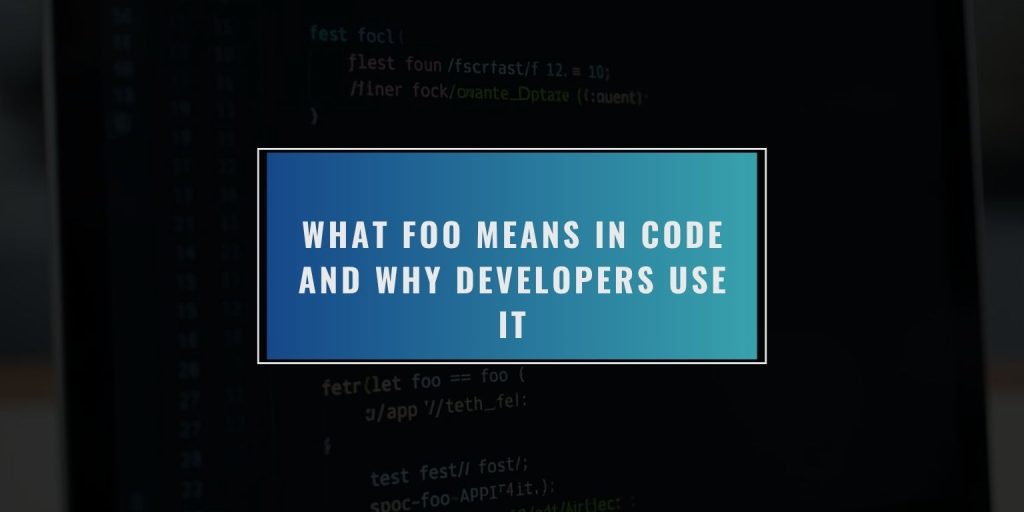Many people see the word foo in coding guides, forums, and tutorials. It looks strange at first. Beginners wonder if foo is a command, a tool, or a hidden feature. It is not any of that. Foo is only a placeholder word that programmers use when they need an example. It has no special function in code. It just takes up space.
Developers use foo in sample code because it is short and easy to type. It shows structure without adding real meaning. This lets readers study the logic, not the name. Foo fits into many types of examples, so you may see it in functions, variables, file paths, and even API samples.
What Foo Means in Programming
Foo is a fake name. It stands in for a real value. It helps teachers and writers explain ideas without worrying about real names. You may see foo in Python, JavaScript, PHP, C, and many other languages. The word stays the same in most guides because the idea is the same everywhere.
Foo is never a keyword. It is never a built in feature. It is not part of the language itself. People use it by choice.
Why Programmers Use Foo
- It is short.
- It is easy to type.
- It keeps examples simple.
- It avoids real meaning that can distract a reader.
- It works with other placeholder names, such as bar and baz.
These points help new coders focus on the idea instead of the name.
Foo in Real Code Examples
Here are a few quick samples that show how foo appears in code. These examples are common in blogs, course notes, and tutorials.
function foo() {
return “test”;
}let foo = 10
fetch(“/api/foo”)
In each example, foo is only a sample name. A real program should use names that match the real job.
Where Foo Came From
The word foo has a long history in computer science. It showed up in early notes from MIT and in older Unix groups. People in these groups used nonsense words to explain ideas. Foo and bar became the most common pair. Then more names like baz and qux joined the group.
Short list of places you may see old references:
- MIT tech reports
- Unix manuals
- Early coding books
These terms became part of programmer culture.
Foo, Bar, Baz, and Other Placeholder Names
Developers often use a small family of fake names. They follow a pattern.
- foo
- bar
- baz
- qux
- quux
Foo and bar appear most often. Baz and qux show up when writers need more examples. These names do not carry meaning. They just help show ideas.
Foo in Online Culture
Foo moved outside programming. People use it in jokes, memes, and comments. Some sites show sample links like example.com/foo. Chat groups use it to hide real data in a screenshot. It still has no meaning. It only fills space.
When Not to Use Foo
You should avoid foo in real projects. Real software needs clear names that explain what the code does. Here are times when foo is not a good idea:
- In production code
- In shared company projects
- In school assignments meant to teach naming
- In public APIs or libraries
Using a clear name helps other people read your work with less guessing.
How Beginners Should Treat Foo
Many beginners think foo hides something important. It does not. It is a blank name that stands in for real data. When you build your own programs, replace foo with names that match your task. For example, change foo to message, price, value, total, username, or anything that fits the job.
The word foo appears often, so do not worry when you see it. It is part of the style that teachers and developers use to explain code.
Conclusion
Foo is a simple placeholder name. It helps developers write short examples that focus on the idea, not the naming. It has no special power. It is not a secret command. It works with other sample words like bar and baz. Understanding foo helps new coders read tutorials with more confidence.
If you want more guides like this, feel free to comment or share this article.




